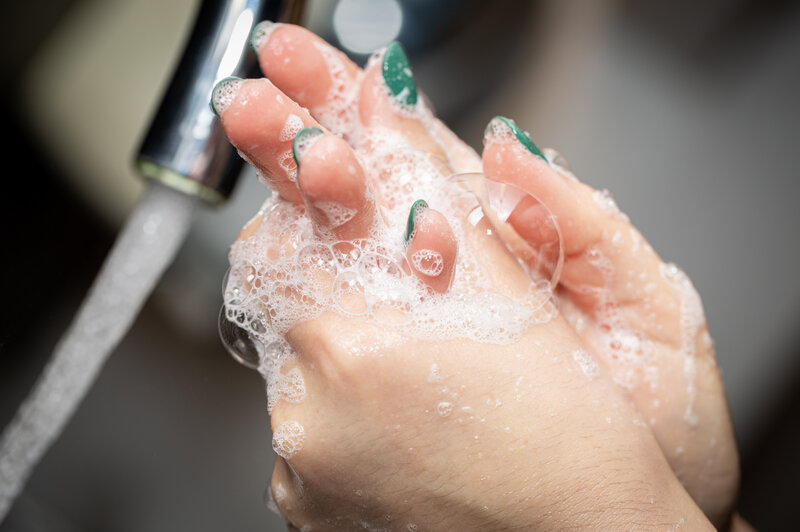August 18, 2020
As concentration that is much as there’s on the common concern of hand hygiene, why is it the talk around hand drying particularly seemed to have, ironically, dried out up?
Years of investigation from hygiene authorities claim that damp hands transfer bacteria a lot more easily compared to dried out ones, as the recurring moisture remaining on hands after making the wash station enables viruses and bacteria to shift to stable surfaces and food by touch. Regardless of this simple investigation, it looks like a vast majority of debate is focused almost solely on the benefits of water and soap, cleaning vigorously and long.
Drying, on the opposite hand, has been provided little focus. A recent search through investigation portal Lexis-Nexis for hand hygiene-related news accounts more than the past 5 years shows that references to hand washing methods occurred over 250 times, while hand drying was just discussed two times.

The chances of a touch-contact-associated bacterial transfer are pervasive and dangerous, particularly for foodservice employees, therefore it is crucial to put a spotlight on the entire picture of hand hygiene. In reality, a report which observed restaurant employees showed food service workers clean hands only one-third of the time as needed by the Food Code.
Although the Food Code does not particularly prescribe the sort or maybe setup of hand drying products (paper towels, warmed air dryers, air knife systems) being used, it can call for that satisfactory provisions be offered to prevent food employees from drying the hands of theirs on the clothes of theirs or any other unclean substances. It notes that for environments where workers are expected to clean and dry the forearms of theirs, air knife methods - automatic hand dryers which provide try separating drying places for every hand - don’t accommodate adequate arm drying, and the establishment, is anticipated to present different ways of drying.
Hand Drying Methods
Only some hand drying methods are just as good at minimizing the chances of cross-contamination.
Several research has examined the usefulness of air dryers compared to outcomes and hand towels highly favor paper towels. For instance, one study published by the Faculty of Leeds in 2014 discovered that levels of airborne germs gathered up and also counted near hot-air dryers to be 27 times over those near paper towel dispensers.
Another paper, published in 2012 by the Mayo Clinic Proceedings, which observed exploration from a dozen investigations, mentioned that from a hygiene perspective, paper towels are better than electricity air dryers and must be endorsed in places where hygiene is supreme.
These results, and also others like them, strengthen the World Health Organization’s stance that correct hand hygiene entails drying ideally with a paper towel.
Compensating for Bad Habits
Everyone is the own worst enemy of theirs regarding hygiene. Despite education, hygiene tools, or signage, people seldom lather, rinse, rub, and dry very long or comprehensive enough.
Solutions that compensate for individuals’ hygienic imperfections - stopping transmission and killing bacteria without adding additional measures - are invaluable in the food industry. For instance, Cascades Tissue Group created the Antibacterial Paper Towel that third party labs show destroys over 99.99 % of bacteria on hands without needing some alteration of habit. The dried up paper towel is impregnated with a secure antimicrobial agent, benzalkonium chloride, widely used in items that range from mouthwash to contact lens solution. Benzalkonium chloride is released once the paper towel would be in contact with damp hands.

The utilization of touch-free paper towel dispensers is growing, which will help lessen the spread of bacteria. But businesses often have a rough time locating room to put in these bulky automatic dispensers, therefore it might be needed to believe small. For example, Cascades Tissue Group’s no contact hand towel dispenser, Tandem Nano, squeezes into little areas.
Setting the Trend
While hand washing protocols and strategies will regularly be critical to a great restaurant environment, good hand and forearm drying is also vital and should not be overlooked.
The effect that hospitality and food service can play in creating much more awareness, and the adoption of this exercise, is enormous. It is not unusual for new developments used in away-from-home spaces to run into the everyday life of ours, therefore hand drying improvements produced in the restaurant's rear can migrate the way of its to patron restrooms, spurring cleaner hands and much more attention about the worth of drying.
Much like the way the trend toward renewable noncommercial homes sprung from LEED certification in business buildings, healthy methods may ultimately travel into consumers’ houses to permeate society on all levels.
You May Like To Read
- An Automatic Hand Dryer Can Help You Stay Germ Free
- The Truth About Electric Hand Dryers
- Uncovering Hand Dryer Fantasies and Confusions
- Xlerator Hand Dryers - Speedy and Convenient
Posted by: Lyndareviews at
08:29 AM
| No Comments
| Add Comment
Post contains 811 words, total size 6 kb.
35 queries taking 0.0423 seconds, 45 records returned.
Powered by Minx 1.1.6c-pink.









